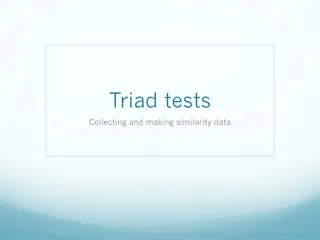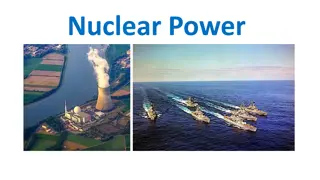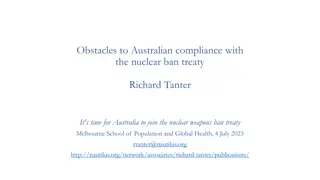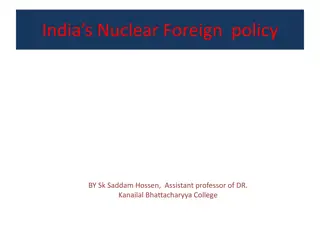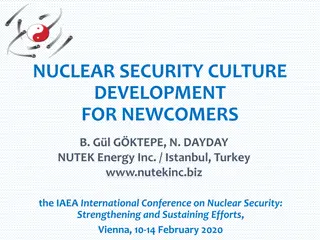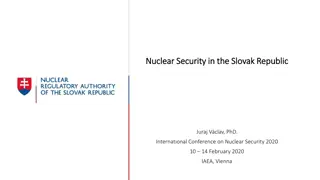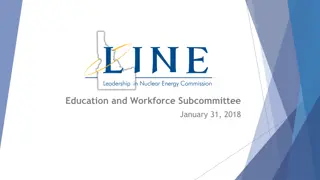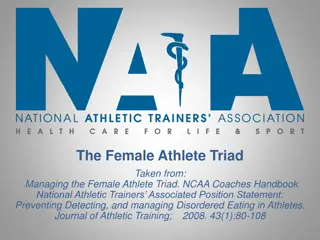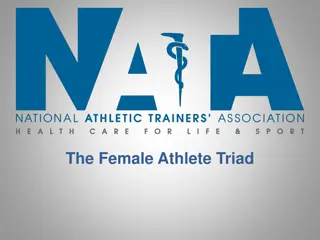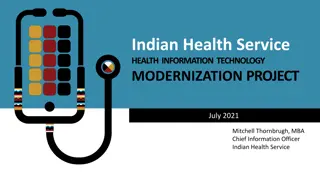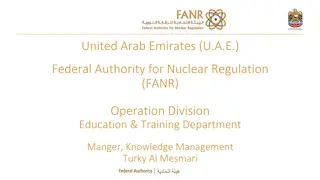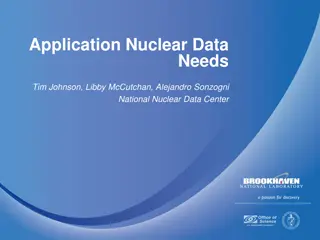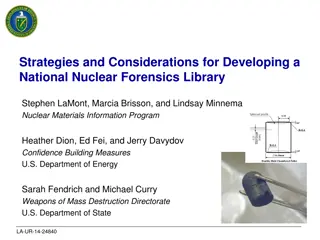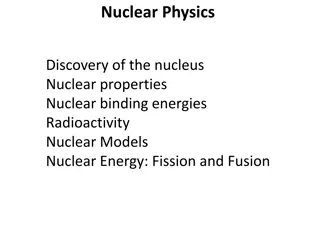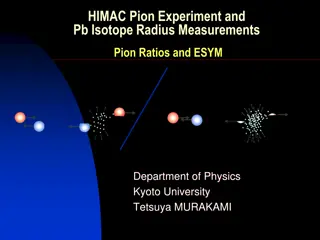Prioritizing Modernization of the Nuclear Triad Legs
Proposes alternative courses of action to prioritize modernizing certain legs of the nuclear Triad based on planned warhead allocations, highlighting the risks of simultaneous modernization, emphasizing the importance of system reliability, and suggesting specific measures to lower costs and risks while maintaining mission requirements.
Download Presentation

Please find below an Image/Link to download the presentation.
The content on the website is provided AS IS for your information and personal use only. It may not be sold, licensed, or shared on other websites without obtaining consent from the author. Download presentation by click this link. If you encounter any issues during the download, it is possible that the publisher has removed the file from their server.
E N D
Presentation Transcript
Options to Modernize Nuclear Weapon Delivery Systems at Lower Cost and Less Risk while Maintaining Current Mission Requirements BLUF: Without topline relief, DoD faces significant budgetary and acquisition risk by simultaneously modernizing all three legs of the nuclear Triad in competition with the F-35 JSF and other priorities. Absent such relief, this brief proposes alternative courses of action to prioritize the modernization of certain Triad legs based on planned warhead allocations and other factors. Marc Quint Research Associate, Pacific Northwest National Laboratory (PNNL) December 9th, 2015 PONI Winter Conference *The views expressed herein are solely those of the author and do not reflect any position or belief of PNNL, Battelle Memorial Institute, or the Department of Energy.
Overview Current plans may attempt replacement of more than half of the nuclear Triad in fewer than 10 years, potentially costing close to 10% of the Defense budget The implications of the competition for funding among nuclear and conventional systems may be understated as some estimates omit important cost data Alternative courses of action: Consider service life extension for Ohio-class SSBNs Consider options other than an all-new ICBM: Propulsion and Guidance Replacement Programs (PRP/GRP) Silo-based deployment of Trident II D5s September 27, 2024 2
Discussing Modernization Priorities Officials speak of complementary nature of the Triad Implied that each mission and each leg is equally important All Triad legs are not created equal Argument supported by planned U.S. warhead allocations Under New START, SSBNs will compose the majority of the nation s operationally deployed nuclear warheads [ ] approximately 70% of deployed strategic warheads designated for the sea-based leg of the strategic triad under the New Start Treaty September 27, 2024 3
Relative Importance of System Reliability Priority for modernization, operations and maintenance, readiness, and reliability should be weighted towards SSBNs Current strategy risks the reliability of the most important systems by weighting equally their priority with less important systems Importance : the significance of system reliability to achieving the system s defined mission SSBNs: most survivable high need for reliability Bombers: flexible medium need for reliability ICBMs: insurmountable obstacle lower need for reliability relative to SSBNs and bombers Permit the least amount of budgetary/acquisition risk for the most important systems and the most amount of risk for the least important systems September 27, 2024 4
Can SSBN Service Lives be Extended? Ohio-class hulls have already been extended to an estimated 42 years from original 30 year design life Ohio-class SSGNs and SSBNs have the same hull and same lifecycle But one-half of the SSGN s lives may theoretically undergo more hull fatigue relative to SSBNs Are the hull fatigue cycles sufficiently different among SSGNs and SSBNs that their hull lives should be different? Research did not delve into cost-effectiveness or other obstacles solely whether anything suggested TRIDENT SLEP was a non- starter September 27, 2024 5
Need for Minuteman III Replacement Is there a technical need for replacement? January 2015 RFI states: Booster age-out Guidance age-out Asset depletion Booster and guidance age-out can be overcome, evidenced by Propulsion and Guidance Replacement Programs (PRP/GRP) Asset depletion 2013 RAND ICBM Report assumes only 500 missiles remain New START Data reflects 698 deployed and non-deployed Minuteman IIIs Between 607 and 652 complete missiles were recapitalized in 2000s during PRP/GRP USAF previously considered Minuteman III SLEP to 2075 September 27, 2024 6
Production Risks for an All-New ICBM 2013 RAND Report estimates cost based on 1980s: Peacekeeper, SICBM, etc. U.S. solid rocket motor (SRM) industrial base in 1980s may have little connection to today s costs Potential lack of ICBM production experience and tacit knowledge relative to the 1980s planning baseline Potential lack of expertise could impose unforeseen costs September 27, 2024 7
Trident II D5 in Minuteman Silos Only currently-produced U.S. SRM strategic missile Low, known cost compared to designing, developing and producing new missile Low technical risk; highly successful test record Significant improvements over Minuteman III Potential obstacles to deployment: Cold-gas ejection system Peacekeeper used cold-gas ejection in existing (retrofitted) MMIII silos Size constraints D5 diameter is larger than MMIII, but Peacekeeper was larger than D5 and deployed in existing silos Range D5 uses more energetic 1.1-class propellant compared to 1.3-class MMIII D5 carries estimated 110,000 pounds of propellant vs. Minuteman 66,000 pounds D5 range assuming single-warhead deployments September 27, 2024 8
Conclusion Current plans may attempt replacement of more than half of the nuclear Triad in fewer than 10 years, potentially costing close to 10% of the Defense budget The implications of the competition for funding among nuclear and conventional systems may be understated as some estimates omit important cost data Fortunately, several adjustments can be made to acquisition schedules to ensure sufficient funding for both nuclear and conventional systems Marc Quint, marc.quint@pnnl.gov, (509) 372-4830 September 27, 2024 9






